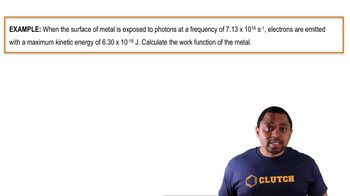Textbook Question
The complete combustion of methane, CH4(g), to form H2O(l) and CO2(g) at constant pressure releases 890 kJ of heat per mole of CH4. (a) Write a balanced thermochemical equation for this reaction.
 Verified step by step guidance
Verified step by step guidance



The complete combustion of methane, CH4(g), to form H2O(l) and CO2(g) at constant pressure releases 890 kJ of heat per mole of CH4. (a) Write a balanced thermochemical equation for this reaction.
The complete combustion of methane, CH4(g), to form H2O(l) and CO2(g) at constant pressure releases 890 kJ of heat per mole of CH4. (b) Draw an enthalpy diagram for the reaction.
The decomposition of sodium bicarbonate (baking soda), NaHCO3(s), into Na2CO3(s), H2O(l), and CO2(g) at constant pressure requires the addition of 85 kJ of heat per two moles of NaHCO3. (a) Write a balanced thermochemical equation for the reaction.